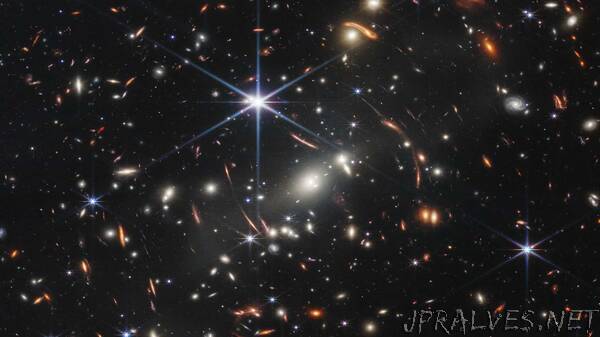
“Could one of the biggest puzzles in astrophysics be solved by reworking Albert Einstein’s theory of gravity? A new study co-authored by NASA scientists says not yet.
The universe is expanding at an accelerating rate, and scientists don’t know why. This phenomenon seems to contradict everything researchers understand about gravity’s effect on the cosmos: It’s as if you threw an apple in the air and it continued upward, faster and faster. The cause of the acceleration, dubbed dark energy, remains a mystery.
A new study from the international Dark Energy Survey, using the Victor M. Blanco 4-meter Telescope in Chile, marks the latest effort to determine whether this is all simply a misunderstanding: that expectations for how gravity works at the scale of the entire universe are flawed or incomplete. This potential misunderstanding might help scientists explain dark energy. But the study – one of the most precise tests yet of Albert Einstein’s theory of gravity at cosmic scales – finds that the current understanding still appears to be correct.
The results, authored by a group of scientists that includes some from NASA’s Jet Propulsion Laboratory, were presented Wednesday, Aug. 23, at the International Conference on Particle Physics and Cosmology (COSMO‘22) in Rio de Janeiro. The work helps set the stage for two upcoming space telescopes that will probe our understanding of gravity with even higher precision than the new study and perhaps finally solve the mystery.
More than a century ago, Albert Einstein developed his Theory of General Relativity to describe gravity, and so far it has accurately predicted everything from the orbit of Mercury to the existence of black holes. But if this theory can’t explain dark energy, some scientists have argued, then maybe they need to modify some of its equations or add new components.
To find out if that’s the case, members of the Dark Energy Survey looked for evidence that gravity’s strength has varied throughout the universe’s history or over cosmic distances. A positive finding would indicate that Einstein’s theory is incomplete, which might help explain the universe’s accelerating expansion. They also examined data from other telescopes in addition to Blanco, including the ESA (European Space Agency) Planck satellite, and reached the same conclusion.
The study finds Einstein’s theory still works. So no explanation for dark energy yet. But this research will feed into two upcoming missions: ESA’s Euclid mission, slated for launch no earlier than 2023, which has contributions from NASA; and NASA’s Nancy Grace Roman Space Telescope, targeted for launch no later than May 2027. Both telescopes will search for changes in the strength of gravity over time or distance.
Blurred Vision
How do scientists know what happened in the universe’s past? By looking at distant objects. A light-year is a measure of the distance light can travel in a year (about 6 trillion miles, or about 9.5 trillion kilometers). That means an object one light-year away appears to us as it was one year ago, when the light first left the object. And galaxies billions of light-years away appear to us as they did billions of years ago. The new study looked at galaxies stretching back about 5 billion years in the past. Euclid will peer 8 billion years into the past, and Roman will look back 11 billion years.
The galaxies themselves don’t reveal the strength of gravity, but how they look when viewed from Earth does. Most matter in our universe is dark matter, which does not emit, reflect, or otherwise interact with light. While scientists don’t know what it’s made of, they know it’s there, because its gravity gives it away: Large reservoirs of dark matter in our universe warp space itself. As light travels through space, it encounters these portions of warped space, causing images of distant galaxies to appear curved or smeared. This was on display in one of first images released from NASA’s James Webb Space Telescope.
Dark Energy Survey scientists search galaxy images for more subtle distortions due to dark matter bending space, an effect called weak gravitational lensing. The strength of gravity determines the size and distribution of dark matter structures, and the size and distribution in turn determine how warped those galaxies appear to us. That’s how images can reveal the strength of gravity at different distances from Earth and distant times throughout the universe’s history. The group has now measured the shapes of over 100 million galaxies, and so far, the observations match what’s predicted by Einstein’s theory.
“There is still room to challenge Einstein’s theory of gravity, as measurements gets more and more precise,” said study co-author Agnès Ferté, who conducted the research as a postdoctoral researcher at JPL. “But we still have so much to do before we’re ready for Euclid and Roman. So it’s essential we continue to collaborate with scientists around the world on this problem as we’ve done with the Dark Energy Survey.””
